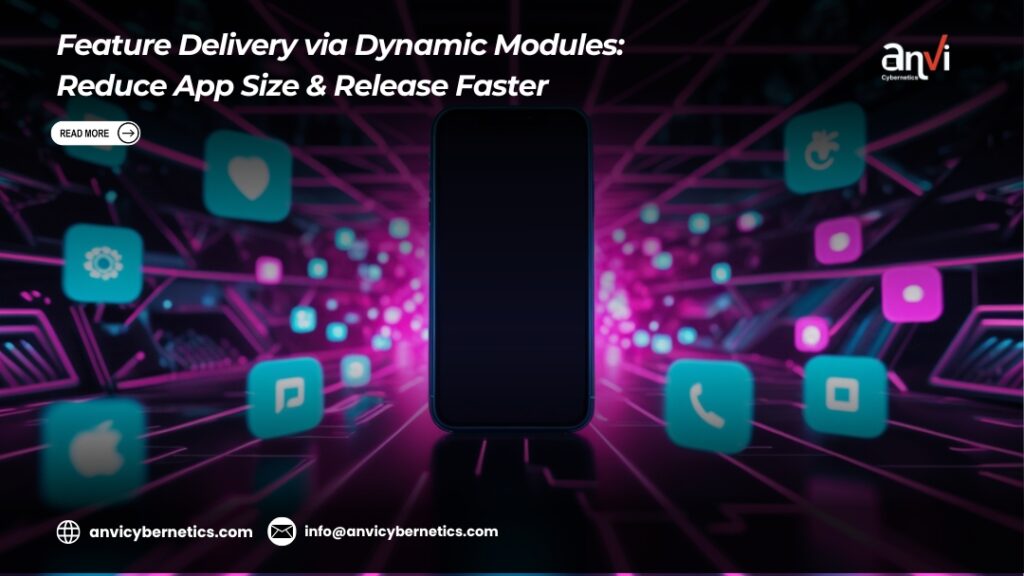
Feature Delivery via Dynamic Modules: Reduce App Size & Release Faster
Modern apps are doing more than ever — payments, chat, AR filters, offline sync — but with every added feature comes a heavier app bundle. Bloated apps don’t just frustrate users; they hurt install rates and retention. According to Google, a 20% increase in app size can reduce install conversion rates by up to 27%.
The solution? Feature delivery via dynamic modules. By breaking your app into smaller, on-demand pieces, you can deliver a leaner core app and let users download features only when needed.
What Are Dynamic Modules?
Dynamic modules are independent feature packages within your app bundle that can be installed or uninstalled on demand. Unlike monolithic APKs, these modules let developers:
Benefits of Using Dynamic Module
Smaller Install Size = Higher Conversions
Faster Release Cycles
Customizable User Journeys
Improved Retention
How Feature Delivery Works in Practice
a. Install-time (delivered with base app).
b. On-demand (downloaded when user needs it).
c. Conditional (installed for certain devices/locales).
Challenges & Best Practices
Best Practices:
Industry Example
A popular e-commerce app reduced its base APK from 90MB to 28MB by moving AR try-on and live chat into dynamic modules. Result: 18% increase in install conversion rates and 12% higher retention after 30 days.
Promotional Spotlight
Want to reduce your app size and release faster? At Anvi Cybernetics, we specialize in modular app development — helping businesses adopt feature delivery via dynamic modules for leaner, scalable apps. From architecting modular codebases to setting up automated release pipelines, our experts ensure your app is optimized for growth.
👉 Explore our Mobile App Development Services
External Resources
Conclusion
The future of mobile app delivery is modular. By adopting feature delivery via dynamic modules, businesses can cut app size, release faster, and give users only what they need, when they need it.




